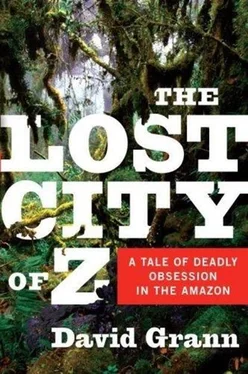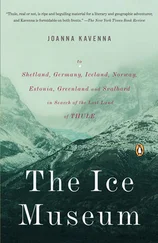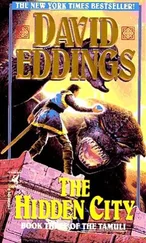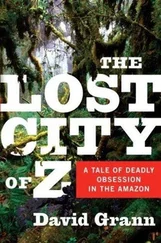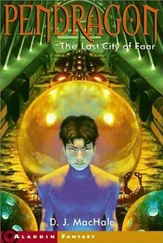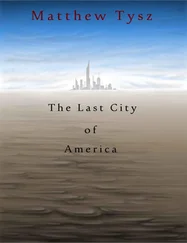The next day we prepared to leave. To reach one of the largest headwaters of the Xingu, the Kuluene River, we needed an even more powerful truck, and so after lunch we said farewell to our driver, who seemed relieved to be going home. “I hope you find this Y you are looking for,” he said.
After he departed, we rented a flatbed truck with tractor-size wheels. As word spread that a truck was heading into the Xingu, Indians emerged from all quarters, carrying children and bundles of goods, hurrying to climb on board. Every time the truck seemed full, another person squeezed on, and as the afternoon rains poured down we began our journey.
According to the map, the Kuluene was only sixty miles away. But the road was worse than any that Paolo and I had traveled: pools of water reached as high as the floorboards, and at times the truck, with all its weight, tipped perilously to one side. We drove no faster than fifteen miles an hour, sometimes coming to a halt, reversing, then pressing forward again. The forests had been denuded here as well. Some areas had recently been burned, and I could see the remnants of trees scattered for miles, their blackened limbs reaching into the open sky.
Finally, as we neared the river, the forest began to reveal itself. Trees gradually closed around us, their branches forming a net that covered the windshield. There was a constant clattering as the wood drummed against the sides of the truck. The driver flicked on the headlights, which bobbed over the terrain. After five hours, we reached a wire fence: the boundary of Xingu National Park. Vajuvi said that it was only half a mile to the river, and then we would travel by boat to the Kalapalo village. Yet the truck soon got stuck in the mud, forcing us to remove our equipment temporarily to lighten the weight, and by the time we reached the river it was pitch-black under the canopy of trees. Vajuvi said that we would have to wait to cross. “It's too dangerous,” he said. “The river is filled with logs and branches. We must not disrespect it.”
Mosquitoes pricked my skin, and macaws and cicadas chanted. Above our heads, some creatures howled. “Do not worry,” Paolo said. “They are only monkeys.”
We walked a bit farther and arrived at a shack: Vajuvi pushed the door, which creaked as it opened. He led us inside and fumbled around until he lit a candle, which revealed a small room with a corrugated-tin roof and a mud floor. There was a wooden pole in the middle of the room, and Vajuvi helped Paolo and me string our hammocks. Though my clothes were still damp with sweat and mud from the journey, I lay down, trying to shield my face from the mosquitoes. After a while, the candle went out, and I swung gently in the darkness, listening to the murmurings of cicadas and the cawing of monkeys.
I fell into a light sleep, but woke suddenly when I felt something by my ear. I opened my eyes with a start: five naked boys, carrying bows and arrows, were staring at me. When they saw me move, they laughed and ran off.
I sat up. Paolo and Vajuvi were standing around a wood fire, boiling water.
“What time is it?” I asked.
“Five thirty,” Paolo said. He handed me some crackers and a tin cup filled with coffee. “It's still a long way,” he said. “You must eat something.”
After a quick breakfast, we walked outside, and in the light of day I could see that we were at a small encampment overlooking the Kuluene River. On the shore were two flat-bottom aluminum boats, into which we loaded our gear. Each boat was about twelve feet long and had an outboard motor-an invention that had been introduced into the Xingu only in recent years.
Paolo and I climbed into one boat with a Kalapalo guide, while Va-juvi and his family traveled in another. Both boats sped upriver, side by side. Farther north were rapids and waterfalls, but here the water was a calm, olive green expanse. Trees lined the banks, their boughs bent like old men, their leaves skimming the surface of the water. After several hours, we docked our boats along the shore. Vajuvi told us to gather our gear, and we followed him up a short path. He paused and waved his hand proudly in front of him. “Kalapalo,” he said.
We stood at the edge of a circular plaza that was more than a hundred yards in circumference and dotted with houses much like those described by the old woman at Bakairí Post. Resembling the overturned hulls of ships, they appeared to be woven, rather than constructed, out of leaves and wood. Their exteriors were covered with thatch, except for a door in the back and the front-both low enough, I was told, to keep out evil spirits.
Several dozen people were walking across the plaza. Many of them were unclothed, and some had adorned their bodies with exquisite ornamentations: monkey-tooth necklaces, swirls of black pigment from the genipap fruit, and swaths of red pigment from the uruku berry. Women between the ages of thirteen and fifty wore loose cotton dresses, the upper half dangling around their waists. Most of the men who weren't naked had on spandex bathing suits, as if they were Olympic swimmers. Physical fitness was clearly a prized trait. Some of the babies, I noticed, had strips of cloth pulled tightly around their calves and biceps, like tourniquets, to accentuate their muscles. “For us, it is a sign of beauty,” Vajuvi said. The tribe continued to commit infanticide against those who seemed unnatural or bewitched, although the practice was less common than previously.
Vajuvi led me into his house, a cavernous space filled with smoke from a wood-burning fire. He introduced me to two handsome women who had long jet-black hair that fanned down over their bare backs. The older woman had a tattoo of three vertical stripes on her upper arms, and the younger one wore a necklace with glittering white shells. “My wives,” Vajuvi said.
Before long, more people stepped out of the shadows: children and grandchildren, sons-in-law and daughters-in-law, aunts and uncles, brothers and sisters. Vajuvi said that nearly twenty people lived in the house. It seemed less like a home than like a self-contained village. In the center of the room, near a pole supporting the roof, from which corn had been hung to dry, one of Vajuvi's daughters knelt in front of a large wooden loom, weaving a hammock, and next to her was a boy wearing a blue-beaded belt, holding fish in an elaborately detailed, brightly painted ceramic pot, and beside him an elderly hunter sat on a large hardwood bench carved in the shape of a jaguar, sharpening a five-foot-long arrow. Fawcett wrote of the southern basin of the Amazon, “The whole of this region is saturated with Indian traditions of a most interesting kind,” which “cannot be founded upon nothing” and which suggest the prior presence of “a once-great civilization.”
The village, which had about a hundred and fifty residents, was highly stratified. These people were not wandering hunter-gatherers. Chiefs were anointed by bloodlines, as with European kings. There were taboos on diet which forbade them to eat most red meats, including tapir, deer, and boar-dietary restrictions that were among the strictest of any in the world and seemed to contradict the notion that the Indians were threatened with a constant state of starvation. At puberty, boys and girls were held in extended seclusion, during which a designated elder taught them the rituals and the responsibilities of adulthood. (The son who was in line to become chief was sequestered for up to four years.) Dyott, during his journey in the Xingu with Aloique, passed through the Kalapalo village and was so impressed by the scene that he wrote, “There is reason to believe that Fawcett's stories of a forgotten civilization are based on fact.”
I asked Vajuvi whether he knew if the people of this region, who were known as Xinguanos, had once descended from a larger civilization, or if there were any significant ruins in the surrounding jungle. He shook his head. According to legend, however, the spirit Fitsi-fitsi built giant moats in the area. (“Everywhere he went that seemed like a nice place to stay, Fitsi-fitsi would make long, deep ditches and leave part of his people there, and he himself would continue traveling.”)
Читать дальше
Конец ознакомительного отрывка
Купить книгу
